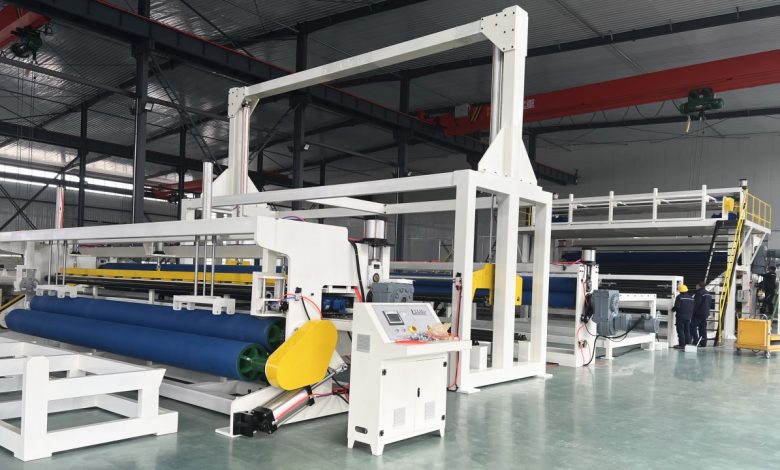From Grid to Ground: How Geogrid Factories are Shaping Modern Infrastructure

Geogrids have become a cornerstone in modern infrastructure projects, playing a crucial role in soil stabilization, reinforcement, and load distribution. As urban areas expand and infrastructure demands increase, the production and innovation in geogrid manufacturing have evolved to meet these challenges. This blog explores how Geogrid factory are influencing contemporary infrastructure projects, from technological advancements to the impact on construction practices.
Understanding Geogrids and Their Importance
What Are Geogrids?
Geogrids are synthetic materials designed to reinforce and stabilize soil and other construction materials. Made from polymers such as polypropylene or polyester, geogrids feature a grid-like structure that interlocks with surrounding materials, improving load distribution and enhancing structural integrity.
Why Geogrids Matter
- Soil Stabilization: Geogrids prevent soil erosion and enhance stability, making them ideal for embankments, retaining walls, and roadways.
- Load Distribution: They distribute loads evenly, reducing pressure on underlying soils and preventing deformation.
- Erosion Control: Geogrids help control erosion by stabilizing soil and supporting vegetation growth.
How Modern Geogrid Factories are Revolutionizing Infrastructure
1. Advanced Production Techniques
Modern geogrid factories utilize advanced production techniques that enhance the performance and reliability of geogrid materials. These techniques include:
Extrusion and Orientation
- Precision Extrusion: High-precision extrusion machines create geogrid sheets with consistent thickness and quality.
- Orientation Technology: Advanced stretching processes align polymer chains to increase tensile strength, making geogrids more effective in reinforcing soil and structures.
Advanced Punching and Forming
- High-Accuracy Punching: Sophisticated punching tools create precise grid patterns, ensuring uniform performance across the geogrid.
- Efficient Forming: Automated forming processes ensure that the final geogrid product meets design specifications and quality standards.
2. Quality Control and Testing
Ensuring the quality and performance of geogrids is critical for their effectiveness in infrastructure projects. Modern geogrid factories implement rigorous quality control measures, including:
Material Testing
- Tensile Strength Tests: Evaluating the geogrid’s ability to withstand pulling forces without failure.
- Durability Tests: Assessing resistance to environmental factors such as UV radiation, chemicals, and temperature variations.
Performance Testing
- Reinforcement Tests: Measuring the effectiveness of geogrids in soil reinforcement and stabilization.
- Load Distribution Tests: Evaluating how well the geogrid distributes loads across the reinforced area.
Standards Compliance
- ASTM Standards: Ensuring geogrids meet performance and testing guidelines.
- ISO Certifications: Adhering to quality management and environmental practices.
3. Technological Innovations
Geogrid factories are at the forefront of technological innovation, leading to advancements in material performance and manufacturing efficiency:
High-Strength Polymers
- Polypropylene and Polyester Innovations: New polymer formulations offer enhanced strength, durability, and performance in various soil conditions.
Eco-Friendly Materials
- Sustainable Solutions: Incorporating recycled and biodegradable materials reduces the environmental impact of geogrid production.
Automation and Efficiency
- Automated Production Lines: Streamlining production processes with automation increases efficiency and consistency.
- Precision Controls: Advanced controls improve accuracy in manufacturing and ensure high-quality products.
4. Customization and Specialized Solutions
Modern geogrid factories offer customized solutions to meet specific project needs, including:
Custom Grid Patterns
- Tailored Designs: Designing geogrids with specific grid patterns to address unique project requirements and enhance performance.
Specialized Coatings
- Enhanced Protection: Applying coatings to improve resistance to UV radiation, chemicals, and other environmental factors.
Innovative Applications
- New Designs: Developing innovative geogrid solutions for emerging challenges in infrastructure and environmental projects.
The Impact of Geogrid Factories on Infrastructure Projects
1. Enhanced Performance and Durability
Modern geogrids offer superior performance and durability, leading to:
Increased Load-Bearing Capacity
- Improved Reinforcement: High-strength geogrids provide effective reinforcement and load distribution, reducing the risk of soil failure and enhancing structural stability.
Long-Term Durability
- Extended Lifespan: Durable geogrids contribute to the longevity of infrastructure projects, minimizing the need for frequent repairs and maintenance.
2. Cost-Effectiveness and Efficiency
Geogrid innovations contribute to cost savings and efficiency in infrastructure projects:
Reduced Construction Costs
- Lower Costs: High-performance geogrids reduce the need for additional reinforcement and maintenance, lowering overall construction costs.
Faster Project Completion
- Accelerated Timelines: Efficient manufacturing processes and high-quality materials enable quicker completion of infrastructure projects.
3. Environmental Benefits
Sustainable practices in geogrid production support environmental goals:
Lower Environmental Impact
- Eco-Friendly Production: Energy-efficient technologies and the use of recycled materials help minimize the environmental footprint of geogrid manufacturing.
Long-Term Sustainability
- Greener Construction: Durable geogrids contribute to sustainable construction practices and support long-term environmental health.
Case Studies: Geogrid Innovations in Action
1. Urban Infrastructure Projects
In urban development, modern geogrids have enhanced the stability of roadways, retaining walls, and green spaces. Innovative geogrid designs address challenges such as high traffic loads and limited space.
2. Environmental Restoration
Geogrids have been instrumental in environmental restoration projects, including erosion control and land reclamation. Sustainable materials and advanced manufacturing techniques have facilitated successful restoration efforts.
3. Large-Scale Construction Projects
In large-scale projects like highways and bridges, modern geogrids have provided essential reinforcement and stability. High-strength geogrids support complex engineering solutions and ensure the structural integrity of critical infrastructure.
Conclusion
Geogrid factories are playing a transformative role in modern infrastructure, leveraging advanced technologies, sustainable practices, and innovative designs. By enhancing performance, efficiency, and environmental responsibility, these factories are shaping the future of construction and civil engineering. As infrastructure demands continue to evolve, geogrid factories will remain at the forefront of innovation, driving progress and ensuring the success of infrastructure projects worldwide.



